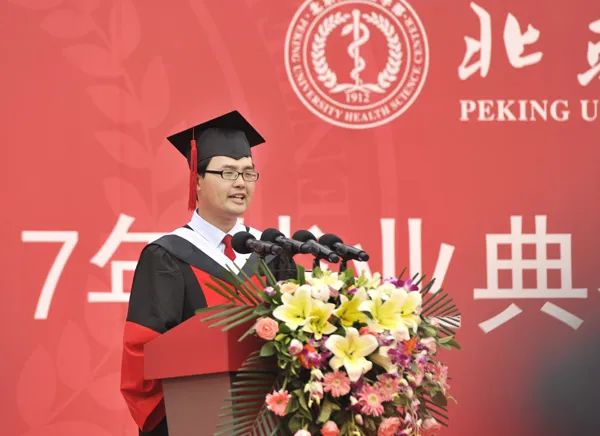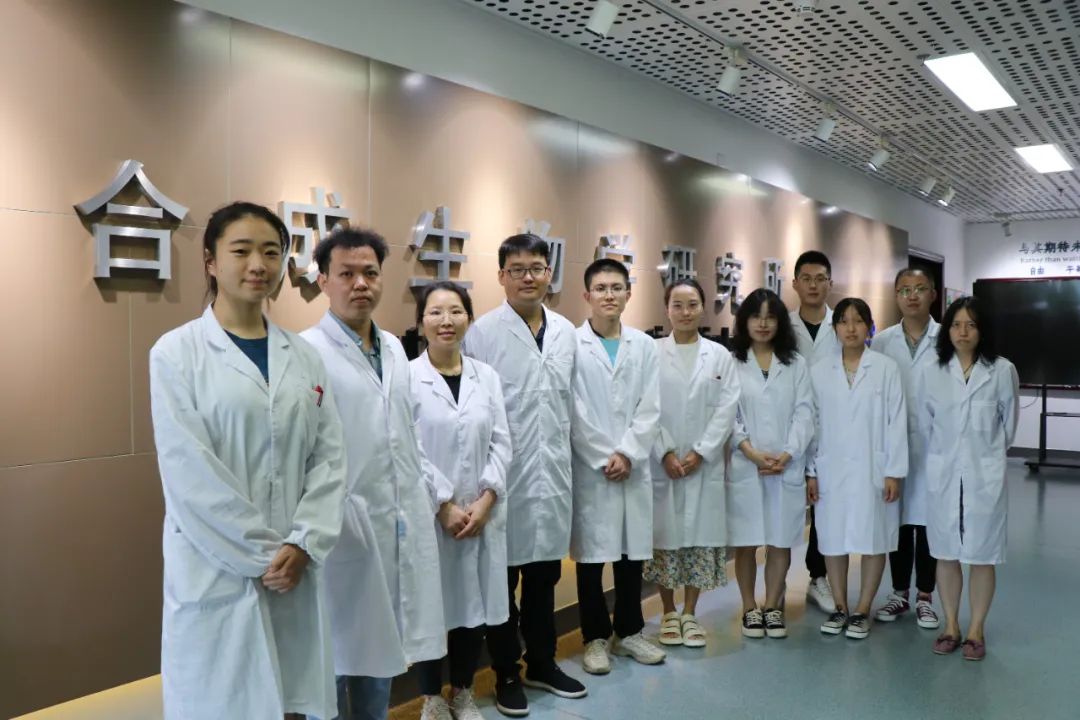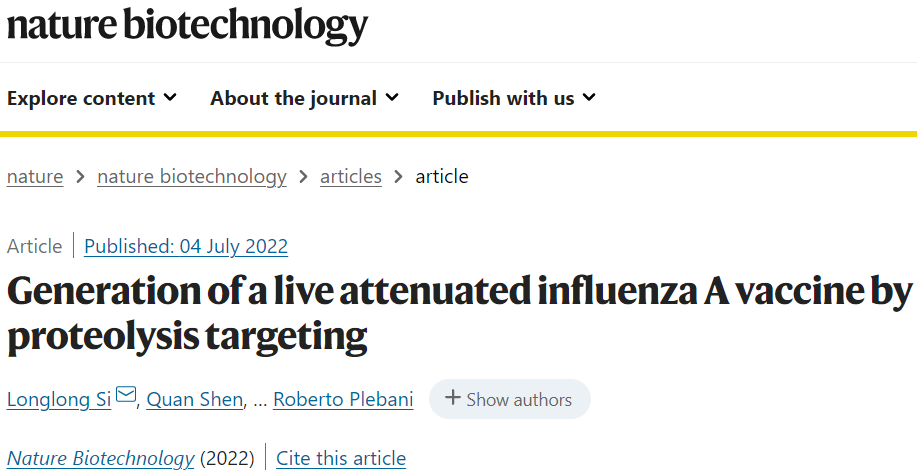
In early July, the latest research findings from the research team of Si Longlong, a post-85s researcher in Shenzhen, were published in "Nature Biotechnology," providing new insights for attenuated vaccine development. This is one of several eye-catching findings by Si Longlong, who, at the age of 27, first published a paper in "Science" magazine.
Si Longlong, 33 years old, is a researcher at the Institute of Synthetic Biology, Shenzhen Institutes of Advanced Technology, Chinese Academy of Sciences (referred to as "Institute of Synthetic Biology, SIAT"). He obtained his Ph.D. from Peking University and later conducted research as a postdoctoral fellow and Wyss Technology Development Fellow at the Wyss Institute of Harvard University and Harvard Medical School.
Si Longlong came to Shenzhen with his family in August 2021 with the idea of conducting research that not only goes on the "book shelf" but also on the "goods shelf. In the fast-paced "Innovation City" of Shenzhen and within the interdisciplinary, young and vibrant research team at the SIAT, Si Longlong's research team has harnessed a plethora of open and shared research platforms and scientific equipment within the institute. Supported by an efficient and pragmatic operational mechanism, he has focused his energy and resources on research projects, and achieved "Shenzhen Speed" in the research track.
Running at "Shenzhen Speed" in Scientific Research.
Si Longlong, a native of Dezhou, Shandong Province, studied in Chengdu and Beijing successively. Out of his interest in scientific research, he decided to take the path of scientific research in the future early during his study for bachelor’s degree.

▲ In 2017, at the graduation ceremony of Peking University Health Science Center, Si Longlong spoke as an outstanding graduate student representative.
Before going abroad for further study in 2017, he had already made up his mind to go to the top international scientific research institutions to further exercise his scientific research ability, understand the leading scientific research operation mode, and then return to China to continue his research career in the future.
Coincidentally, the Institute of Synthetic Biology, SIAT was established in 2017. After three years of development, the SIAT has gathered an increasing number of young talents in the field of synthetic biology.
In June 2020, Si Longlong planned to join the team. He chose Shenzhen for several reasons, closely related to the three-tier "environment" consisting of Shenzhen, the Shenzhen Institutes of Advanced Technology of the Chinese Academy of Sciences, and the Institute of Synthetic Biology of SIAT.

▲ Si Longlong Research Team, Institute of Synthetic Biology, SIAT
As early as 2019, Si Longlong learned through various channels, including discussions with friends, that Shenzhen was a vibrant city with a flexible and open research and innovation atmosphere and culture. Additionally, Shenzhen showed a strong commitment to research and innovation, not only appreciating fundamental research but also emphasizing the translation of research findings into practical applications.
Si Longlong mentioned that the ideal goals of researchers usually revolve around two "shelves": one is the "book shelf," which involves exploring, expanding or challenging existing knowledge, while the other is the "goods shelf," which involves transforming research findings into industrial applications. He hoped to have the opportunity to strike a balance between "book shelf" and "goods shelf" pursuits, using research findings to create value for society.
“My research interest lies in synthetic biology, with a focus on medical translation research. This aligns well with SIAT’s strategic development in synthetic biology, biotechnology, and healthcare. Moreover, Shenzhen, the Shenzhen Institutes of Advanced Technology of the Chinese Academy of Sciences, and the Institute of Synthetic Biology all prioritize research innovation and the application of research findings, making it a perfect fit,” said Si Longlong.
Shenzhen is a young city, and the SIAT places a strong emphasis on nurturing young talents. Research funding provides researchers with greater autonomy. Furthermore, the SIAT's interdisciplinary nature offers opportunities for collision of ideas and collaboration among researchers from various fields.
The Institute of Synthetic Biology of SIAT not only boasts cutting-edge research platforms in synthetic biology but also attracts a group of outstanding researchers in the field. During his interview, Si Longlong felt at ease in communication and looked forward to working with these Pis at the institute.
Now, there are nearly 1,000 people in the Institute of Synthesis Biology of SIAT, and the average age of nearly 50 full-time PIs is only 38 years old, all of whom come from top universities at home and abroad. The institute has also established a cross-collaboration fund to encourage PIs from different directions to collaborate with each other. Si Longlong has made significant progress in collaborations with some PIs.
Enjoying the Thrills of Research in Fast-Paced Shenzhen.
Si Longlong felt the unique fast pace of Shenzhen even before arriving in the city.
Before he officially joined the Institute in August 2021, postdocs and research assistants in his research team had already been ready, and preliminary research work had begun.
The SIAT boasts top-notch experimental equipment and platforms, with the majority of equipment open for sharing. Si Longlong's research team set up its own laboratory pretty soon, saving a significant amount of funds and time. This mechanism ensures that young scientists like Si Longlong can rapidly initiate scientific research and team building upon their return to China.
Si Longlong also noted that within the institute, both technical support and administrative departments worked with exceptional efficiency. Feedback was provided within minutes if things were moving quickly, and even if things took longer, responses were usually received on the same day. The institute maintained the same high level of efficiency when communicating with external relevant departments.
On July 4th, Si Longlong's research team published a research finding in "Nature Biotechnology." Using the influenza virus as a model virus, they developed a technology for protein degradation-targeted attenuation of viral vaccines by manipulating the degradation of viral proteins.
This finding, based on concepts of synthetic biology technology, extended the cellular protein degradation mechanism to the design of viral vaccines. It offers new insights into the development of attenuated viral vaccines and promotes the deep integration of basic biology research on cellular protein degradation machinery with medical translation in vaccine development.

▲ Screenshot of the research findings of Si Longlong's research team in "Nature Biotechnology"
When asked about the rapid progress of research projects and the ability to publish research findings in "Nature Biotechnology" in a shorter timeframe, Si Longlong cited preliminary thinking and accumulation in the research direction as one reason. However, he emphasized that the main reason was Shenzhen's innovative environment as well as the advanced and well-organized research platforms and efficient operational modes at the SIAT.
Now, Si Longlong has become accustomed to his work and life in Shenzhen. His family resides in a talent apartment near the SIAT, and he can walk to his office. Beyond his research work, he can spend quality time with his family by engaging in sports and leisure activities in nearby areas such as Dasha River Park and Tanglang Mountain.
Even when he occasionally needs to work late into the night in the lab, he doesn't find it tiring. He enjoys quiet contemplation and the fun of scientific research. He remarked, "As long as you find something you love, you won't feel tired.”
In Si Longlong's view, research is a long-term commitment that requires sustained effort and accumulation. Without diligent efforts, even gifted talents may struggle to find opportunities to shine.
With the Major Scientific Infrastructure for Synthetic Biology Research located in the Guangming Science City of Shenzhen put into use in 2023, researchers like Si Longlong will have access to more large-scale automated machinery. This is expected to significantly increase research and industrial efficiency.

▲ Renderings of the World's First Major Scientific Infrastructure for Synthetic Biological Research in Shenzhen Guangming Science City
Today's Shenzhen
is accelerating its transformation into
a coveted destination
for exceptional scientists and innovative talents worldwide.
The continuously improving innovation environment
is drawing young scientists like Si Longlong
to gather here.
They are setting a contemporary pace known as
"Shenzhen Speed” on the research track.
Brief introduction of PI and the research team;
Dr. Si Longlong is a researcher at the Institute of Synthetic Biology, Shenzhen Institutes of Advanced Technology, Chinese Academy of Sciences. He obtained his Ph.D. from Peking University and subsequently conducted research as a postdoctoral fellow and Wyss Technology Development Fellow at Harvard University's Wyss Institute and Harvard Medical School.
His laboratory is dedicated to developing and applying new strategies and systems for researching and preventing viral infections. In recent years, Dr. Si Longlong has achieved significant research milestones, publishing as a corresponding author or first author (including co-first author) in prestigious journals such as Science, Nature Biotechnology, Nature Biomedical Engineering, Nature Communications, Science Advances, and Biomaterials. His team has also secured over 20 patents, and a collaborative development of an anti-COVID-19 drug has entered Phase II clinical trials.